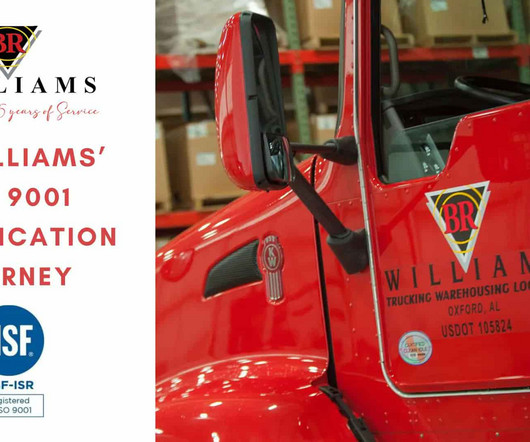BR Williams’ ISO 9001 Certification Journey: ISO 9001 Quality Management Certified
BR Williams Supply Chain Management
SEPTEMBER 25, 2023
In this blog post, we will take you through the significance of ISO 9001:2015 certification for BR Williams. We will explore how this certification has elevated our operations, enhanced our efficiency, fortified our risk management practices, and propelled us forward as a leader in the logistics field.

















Let's personalize your content